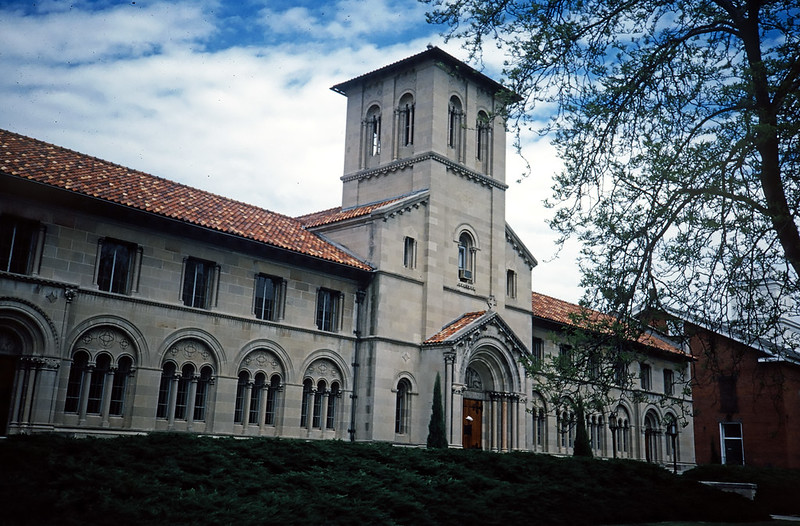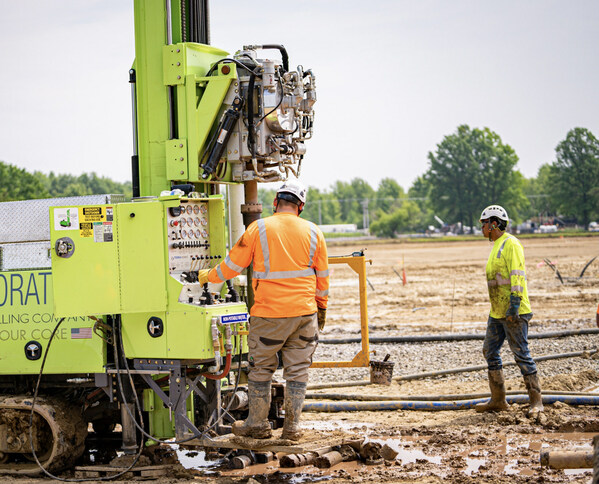
According to the university, this will significantly reduce overall energy costs, and most importantly, cut campus energy consumption by over 30 per cent as Oberlin pledges to reach carbon neutrality by 2025.
Over the past few months, Subterra kicked off drilling over 850 borehole wells that run 600-feet deep, roughly the length of 100 miles of underground pipe. This will lay the groundwork for the geo-exchange loop system that will be installed under Oberlin’s outdoor practice fields located north of the campus buildings.
Using a closed-loop network of underground fluid-filled, temperature-controlled thermal pipes, the geo-exchange system uses the subsurface year-round temperature (55 degrees Fahrenheit, or about 13 degrees Celsius) as a heat source and heat sink (absorbing excess heat during summer) to supply buildings with thermal energy for heating and cooling spaces. The underground piping system is circulated to a series of heat exchangers and heat pumps.
In the winter, the energy station pumps hot water through pipes to heat buildings on the district system, and the cooled water returns to the energy station for reheating. In the summer, cold water pumps through pipes to cool the buildings.
An expanding drilling fleet
Subterra also confirmed that it now has 68 rigs in its geothermal drilling fleet and plans to grow it to over 100 in the next 12 months. With its subsidiaries having recently purchased new state-of-the-art coil and sonic drilling rigs – Subterra proudly notes it sourced some of the assets locally from innovative drilling rig manufacturer, Ohio-based Terra Sonic International (TSi).

On World Geothermal Energy Day, Subterra Renewables celebrates Ohio’s Oberlin College in its drive to Net Zero by 2025 as the campus converts its century-old heating system to a geothermal energy exchange system. Workers on site are using state-of-the-art sonic drilling rigs to bore 850 well holes, 600-feet underground to install the thermal pipes. (CNW Group/Subterra Renewables)
The coil rigs allow for drilling production that is 400% faster than the standard competing rigs; and the TSi sonic rigs are equipped with innovative technology that allows for advanced setting of casings that are 200% faster and more reliable than the standard rigs used by Subterra’s main competitors in the U.S. and Canada.
As one of the largest drilling projects undertaken to date using its state-of-the-art Tsi sonic drilling rigs, in addition to coil drilling rigs, the Company is forecasting expanded U.S. growth as other large American campuses and districts look to retrofit buildings or new developments with geo-exchange systems installations. Additionally, Subterra offers a unique system whereby clients may purchase the geo-exchange system at no up-front cost via its utility model of energy as a service (EaaS) offering. Users pay a monthly renewable energy fee over a long-term, multi-year period at a discount to the operating budget.
“The Oberlin district program is a watershed project for Subterra that represents a major U.S.-based drilling development and campus conversion to a geothermal district energy system, proving that our investment in technology-advanced drilling rigs will revolutionize and expedite our projects. It further demonstrates we are the unmatched geo-exchange leaders across North America,” said Kareem Mirza, Chief Revenue Officer at Subterra Renewables.
Earlier this year, Subterra was awarded the contract for the Green Snow project in northern Japan, a hybrid renewable energy venture that aims to tap into the region’s abundant low to medium-heat geothermal resources for power generation. It is being developed by TerraScale with the California-based Climate Transition Development Corporation and the Japanese company, Global Family.